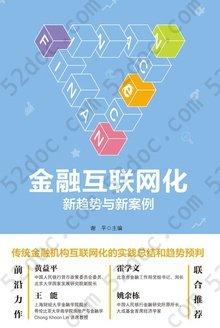注重体验与质量的电子书资源下载网站
分类于: 互联网 编程语言
简介

中华民族多元一体格局 豆 7.6分
资源最后更新于 2020-11-09 05:08:58
作者:费孝通
出版社:中央民族大学版社
出版日期:1999-01
ISBN:9787810563680
文件格式: pdf
标签: 费孝通 民族学 社会学 历史 人类学 民族 民族主义 中国
简介· · · · · ·
新中国成立之初,党和政府以全新的思路、百倍的热情,对旧中国遗留下来的棘手的民族问题进行了全面梳理和研究,并一直探索在社会不断发展中逐步予以解决的道路。伴随这个过程,一个由中国学者自己创立的、旨在解决中国自身民族问题的理论——“中华民族多元一体”理论也应运而生。《中华民族多元一体格局》这篇著名杰作。其主要论点可概括为:一、中华民族是包括中国境内56个民族的民族实体,并不是把56个民族加在一起的总称,因为这些加在一起的56个民族已结合成相互依存的、统一而不能分割的整体,在这个民族实体里所有归属的成分都已具有高一层次的民族认同意识,即共休戚、共存亡、共荣辱、共命运的感情和道义。这个论点后被陈连开先生引申为民族认同意识的多层次论。多元一体格局中,56个民族是基层,中华民族是高层。二、形成多元一体格局有一个从分散的多元结合成一体的过程,在这过程中必须有一个起凝...
目录
目 录
代序:民族研究――简述我的民族研究经历
与思考
第一章 导论
一、中华民族的多元一体格局
(一)中华民族的生存空间
(二)多元的起源
(三)新石器文化多元交融和汇集
(四)凝聚核心汉族的出现
(五)地区性的多元统
(六)中原地区民族大混杂、大融合
(七)北方民族不断给汉族输入新的血液
(八)汉族同样充实了其他民族
(九)汉族的南向扩展
(十)中国西部的民族流动
(十一)中华民族格局形成的几个特点
(十二)瞻望前途
二、中华民族研究的新探索
第二章 中华民族的起源与形成
一、中华新石器文化的多元区域性发展
(一)中华文化起源于中华大地
(二)黄河中下游东西相对的两个文化区
(三)长江中下游东西相对的两个文化区
(四)燕辽文化区及黄河上游文化区
(五)以鄱阳湖――珠江三角洲为中心的
华南文化区
(六)北方游牧与渔猎文化区
(七)南北农业及狩猎文化三带的平行发展
二、中华远古的各部落集团
(一)史料问题
(二)父权制以前的史影
(三)父权制时代各部落集团
三、中华民族形成史的分期
(一)中华民族的起源与孕育
(二)中华民族的自在发展
(三)中华民族从自发到自觉的联合
四、中华民族的结构
(一)中华大地的地理结构
(二)中华民族的民族结构
(三)中华民族的政治结构
五、中华民族的共同性(一)
(一)中华民族认同有长远的历史渊源
(二)各兄弟民族之间,你中有我,我中有你
(三)各具特点和特长而又互相学习和吸收
(四)中国民族关系的新纪元
六、中华民族的共同性(二)
(一)远古神话所反映的共性与个性
(二)中国各民族远古祖先的认同与各自的特点
(三)各民族的历史自古认同为中国历史的一部分
(四)在中华民族解放斗争中同呼吸共命运
第三章 民族称谓含义的演变及其内在联系
一、“汉人”考
(一)“汉人”称谓的起源
(二)“汉人”族称的形成
(三)“汉人”范围的扩大与“汉族”称谓的出现
(四)对“汉人”称谓的演绎
二、“契丹”――汉人之别名
三、历史上少数民族中的“汉人成分
(一)少数民族的崛兴往往得助于汉人
(二)汉人之化入西北民族的成分
(三)汉人之化入西南、东南民族的成分
(四)汉人之化入中南民族的成分
(五)汉人间有迁于邻国而被涵化的成分
(六)民族间相互涵化是促进发展的因素
四、中国・华夷・蕃汉・中华・中华民族
(一)中国名称的起源
(二)春秋战国时期中国与华夷的含义
(三)秦以后中国含义的发展演变与确立
(四)汉人与蕃汉对举的内涵及外延
(五)中华与中华民族含义的演变和发展
第四章 中国历史上游牧民族的地位
一、匈奴游牧社会的历史地位
(一)匈奴统一中国北方游牧区的历史意义
(二)长城内外广大农业区与游牧区的形成
(三)匈奴游牧社会的历史地位
(四)游牧社会与农业社会历史的整体联系
二、西汉政府设置河西四郡的历史意义
(一)设置河西四郡的历史背景
(二)河西四郡促进了汉朝对西域的统一
(三)河西四郡促进了中西交通的发展
(四)河西四郡促进了西北经济文化的发展
第五章 中华民族研究的理论与方法
一、民族研究新发展的良好开端
(一)对中华民族的研究是时代的需要
(二)对中华民族内涵与外延的探讨
(三)对中华民族“多元”与“一体”的探讨
二、中华民族起源学说的由来与发展
(一)从一元说到多元一体说
(二)多元一体说的考古学依据
(三)中华文明初曙发展的总趋势
(四)需要对远古神话系统整理
三、传统民族观与中华民族一体观
(一)传统的“华夷之辨”
(二)“大一统’格局中的“华夷之防’
(三)中华民族从自在发展到自觉的联合
四、中国民族研究的识异与求同
修订本跋
CONTENTS
In Lieu of a Preface: An Brief Account of My Experience and
Reflection on Ethnic Studies � � ?Fei Xiaotong
Chapter One Introduction
1 The Pattern of Diversity in Unity of
the Chinese Nation
(1) Living Space of the Chinese Nation
(2) Origin of the Diversity
(3) Blending and Convergence of the Diversity of
Neolithic Culture
(4) Emergence of the Han People-a Cohesive
Core
(5) Diversity in Unity in Different Localities
(6) Great Minglement and Great Blending of
Ethnic Groups in the Central Plains
(7) Northern Ethnic Groups Continuously Infused
New Blood into the Han People
(8) The Han People Also Strengthened Other
Ethnic Groups
(9) Southward Expansion of the Han People
(10) Migration of Ethnic Groups in West China
(11) Some Characteristics in the Forming of the
Pattern of the Chinese Nation
(12) Looking into the Future
2. A New Exploration in the Research of
the Chinese Nation
Chapter Two Origin and Formation of the Chinese Nation
1. Chinese Neolithic Cultures Developed
in Different Regions
(1) Chinese Culture Originated on the Territory of
China
(2) Two Cultural Regions Opposite to Each Other
from East to West in the Middle and Lower Reaches
of the Yellow River
(3) Two Cultural Regions Opposite to Each Other
from East to West in the Middle and Lower
Reaches of the Yangtze River
(4) Yan-Liao Cultural Region and the
Cultural Region in the Upper
Reaches of the Yellow River
(5) South China Cultural Region with Boyang Lake
and Pearl River Delta as Its Center
(6) Nomadic and Hunting Cultural Region
in the North
(7) The Parallel Development of the Three Zones-
Agricultural Cultural Zones in the North and
South and the Hunting Cultural Zone
2. Tribal Groups in Ancient China
(1) Several Problems Related to Historical
Materials
(2) Historical Shadows Before Patriarchy
(3) Tribal Groups in the Times of Patriarchy
3. Time Division of the History of Formation of
the Chinese Nation
(1) The Rise and Growth of the Chinese
Nation
(2) The Chinese Nation Developed on Its Own
(3) The Chinese Nation Going from Spontaneous
to Conscientious Union
4. The Structure of the Chinese Nation
(1) Geographic Structure of the Chinese Land
(2) Ethnic Structure of the Chinese Nation
(3) Political Structure of the Chinese Nation
5. Common Characters of the Chinese Nation (1)
(1) The Identification of the Chinese Nation
Has a Long History
(2) Among Brethren Ethnic Groups " 1 Am in You
and You Are in Me"
(3) Each Has Its Own Distinguishing Features and
Specialties, and They Learn from Each Other
(4) A New Era for the Relations Between China's
Ethnic Groups
6. Common Characters of the Chinese Nation (11)
(1) General and Specific Character Reflected
in Ancient Myths
(2) Identification of Forefathers of Various Ethnic
Groups in China and Their Respective Distinguishing
Features
(3) History of Various Ethnic Groups Has Been
from Ancient Times Identified As Part of Chinese
History
(4) Sharing a Common Fate in the Struggle for
the Liberation of the Chinese Nation
Chapter Three The Evolution of Ethnic Appellations and the
Internal Relations That They Have Revealed
1. A Textual Research of the Term " Han"
(1) Origin of the Appellation of " Han"
(2) The Formation of the Ethnic Group Appellation
of" Han"
(3) The Expansion of the Scope of " Han" and
the Emergence of the Appellation of " Han"
(4) The Evolution of the Appellation of
" Han"
2. " Qidan" -Another Name for Han
3. The " Han Component" in Ethnic Minorities
in History
(1) Rise of Ethnic Minorities Often due to
the Help of the Han
(2) Some Han Elements Assimilated into Northwest
Ethnic Minorities
(3) Some Han Elements Assimilated into Southwest
and Southeast Ethnic Minorities
(4) Some Han Elements Assimilated into South
Central Ethnic Minorities
(5) Some Han Elements Moved to Neighboring
Countries and Were Assimilated
(6) Assimilation Between Different Ethnic Groups
Was a Factor for Promoting Development
4 Zhongguo, Hua-Yi, Fan-Han, Zhonghua,
the Chinese Nation
(1) The Origin of the Name of China
(2) The Meaning of Zhongguo and Hua-Yi
During the Spring &. Autumn Period and
Warring States Period
(3) The Evolution of the Meaning of Zhongguo
and the Final Set Up of the Term
(4) Intension and Extension of " Han" and
" Fan-Han"
(5) Evolution and Development of the Meaning
of the Terms Zhonghua and the Chinese
Nation
Chapter Four Historical Position of Nomadic Ethnic Groups
in China
1. Historical Position of the Xiongnu (Hun)
Nomadic Society
(1) Historic Significance of the Xiongnu (Hun)
Unifying Nomadic Areas in North China
(2) The Formation of the Vast Farming Areas
and Nomadic Areas Inside and Outside of
the Great Wall
(3) Historical Position of the Xiongnu Nomadic
Society
(4) Historical Connections Between Nomadic Society
and Farming Society
2. Historic Significance of Setting Up Four Prefectures
in the Hexi (Gansu) Corridor by the Western
Han Government
(1) Historical Background of Setting Up Four
Prefectures in the Hexi Corridor
(2) The Four Prefectures in the Hexi Corridor
Helped to Bring About the Unification of
Western Regions by the Han Dynasty
(3) The Four Prefectures in the Hexi Corridor
Helped to Bring About the Development of
Communication Between China and the West
(4) The Four Prefectures in the Hexi Corridor
Helped to Bring About the Economic and
Cultural Development in Northwest China
Chapter Five Theories and Methods for the Study of the Chi-
nese Nation
1. A Good Beginning for the New Development of
Ethnic Studies
(1) Studies in the Chinese Nation is the Need of
Times
(2) A Probe into the Intension and Extension of
the Chinese Nation
(3) A Probe into the " Diversity" and " Unity" of
the Chinese Nation
2.The Origin and Development of the Theories of
the Genesis of the Chinese Nation
(1) From the Theory of One Origin to the Theory
of Diversity in Unity
(2) Archaeological Basis for the Theory of Diversity
in Units
(3) General Trends of the Development of the Chinese
Civilization at Its Initial Stage
(4) Compilation of Ancient Mythological
System
3.Traditional Concept of Ethnic Groups and
the Concept of the Chinese Nation as a Whole
(1) Traditional " Differentiation
Yi (Han and Ethnic Minorities)"
(2) The " Hua Guarding Against Yi" in the Pattern
of a Unified Domain
(3) The Chinese Nation Going from Spontaneous
Development to Conscientiops Union
4. Acknowledging differences and Seeking Common
Ground in the Study of the Chinese Nation
Postscript to the Second Edition
代序:民族研究――简述我的民族研究经历
与思考
第一章 导论
一、中华民族的多元一体格局
(一)中华民族的生存空间
(二)多元的起源
(三)新石器文化多元交融和汇集
(四)凝聚核心汉族的出现
(五)地区性的多元统
(六)中原地区民族大混杂、大融合
(七)北方民族不断给汉族输入新的血液
(八)汉族同样充实了其他民族
(九)汉族的南向扩展
(十)中国西部的民族流动
(十一)中华民族格局形成的几个特点
(十二)瞻望前途
二、中华民族研究的新探索
第二章 中华民族的起源与形成
一、中华新石器文化的多元区域性发展
(一)中华文化起源于中华大地
(二)黄河中下游东西相对的两个文化区
(三)长江中下游东西相对的两个文化区
(四)燕辽文化区及黄河上游文化区
(五)以鄱阳湖――珠江三角洲为中心的
华南文化区
(六)北方游牧与渔猎文化区
(七)南北农业及狩猎文化三带的平行发展
二、中华远古的各部落集团
(一)史料问题
(二)父权制以前的史影
(三)父权制时代各部落集团
三、中华民族形成史的分期
(一)中华民族的起源与孕育
(二)中华民族的自在发展
(三)中华民族从自发到自觉的联合
四、中华民族的结构
(一)中华大地的地理结构
(二)中华民族的民族结构
(三)中华民族的政治结构
五、中华民族的共同性(一)
(一)中华民族认同有长远的历史渊源
(二)各兄弟民族之间,你中有我,我中有你
(三)各具特点和特长而又互相学习和吸收
(四)中国民族关系的新纪元
六、中华民族的共同性(二)
(一)远古神话所反映的共性与个性
(二)中国各民族远古祖先的认同与各自的特点
(三)各民族的历史自古认同为中国历史的一部分
(四)在中华民族解放斗争中同呼吸共命运
第三章 民族称谓含义的演变及其内在联系
一、“汉人”考
(一)“汉人”称谓的起源
(二)“汉人”族称的形成
(三)“汉人”范围的扩大与“汉族”称谓的出现
(四)对“汉人”称谓的演绎
二、“契丹”――汉人之别名
三、历史上少数民族中的“汉人成分
(一)少数民族的崛兴往往得助于汉人
(二)汉人之化入西北民族的成分
(三)汉人之化入西南、东南民族的成分
(四)汉人之化入中南民族的成分
(五)汉人间有迁于邻国而被涵化的成分
(六)民族间相互涵化是促进发展的因素
四、中国・华夷・蕃汉・中华・中华民族
(一)中国名称的起源
(二)春秋战国时期中国与华夷的含义
(三)秦以后中国含义的发展演变与确立
(四)汉人与蕃汉对举的内涵及外延
(五)中华与中华民族含义的演变和发展
第四章 中国历史上游牧民族的地位
一、匈奴游牧社会的历史地位
(一)匈奴统一中国北方游牧区的历史意义
(二)长城内外广大农业区与游牧区的形成
(三)匈奴游牧社会的历史地位
(四)游牧社会与农业社会历史的整体联系
二、西汉政府设置河西四郡的历史意义
(一)设置河西四郡的历史背景
(二)河西四郡促进了汉朝对西域的统一
(三)河西四郡促进了中西交通的发展
(四)河西四郡促进了西北经济文化的发展
第五章 中华民族研究的理论与方法
一、民族研究新发展的良好开端
(一)对中华民族的研究是时代的需要
(二)对中华民族内涵与外延的探讨
(三)对中华民族“多元”与“一体”的探讨
二、中华民族起源学说的由来与发展
(一)从一元说到多元一体说
(二)多元一体说的考古学依据
(三)中华文明初曙发展的总趋势
(四)需要对远古神话系统整理
三、传统民族观与中华民族一体观
(一)传统的“华夷之辨”
(二)“大一统’格局中的“华夷之防’
(三)中华民族从自在发展到自觉的联合
四、中国民族研究的识异与求同
修订本跋
CONTENTS
In Lieu of a Preface: An Brief Account of My Experience and
Reflection on Ethnic Studies � � ?Fei Xiaotong
Chapter One Introduction
1 The Pattern of Diversity in Unity of
the Chinese Nation
(1) Living Space of the Chinese Nation
(2) Origin of the Diversity
(3) Blending and Convergence of the Diversity of
Neolithic Culture
(4) Emergence of the Han People-a Cohesive
Core
(5) Diversity in Unity in Different Localities
(6) Great Minglement and Great Blending of
Ethnic Groups in the Central Plains
(7) Northern Ethnic Groups Continuously Infused
New Blood into the Han People
(8) The Han People Also Strengthened Other
Ethnic Groups
(9) Southward Expansion of the Han People
(10) Migration of Ethnic Groups in West China
(11) Some Characteristics in the Forming of the
Pattern of the Chinese Nation
(12) Looking into the Future
2. A New Exploration in the Research of
the Chinese Nation
Chapter Two Origin and Formation of the Chinese Nation
1. Chinese Neolithic Cultures Developed
in Different Regions
(1) Chinese Culture Originated on the Territory of
China
(2) Two Cultural Regions Opposite to Each Other
from East to West in the Middle and Lower Reaches
of the Yellow River
(3) Two Cultural Regions Opposite to Each Other
from East to West in the Middle and Lower
Reaches of the Yangtze River
(4) Yan-Liao Cultural Region and the
Cultural Region in the Upper
Reaches of the Yellow River
(5) South China Cultural Region with Boyang Lake
and Pearl River Delta as Its Center
(6) Nomadic and Hunting Cultural Region
in the North
(7) The Parallel Development of the Three Zones-
Agricultural Cultural Zones in the North and
South and the Hunting Cultural Zone
2. Tribal Groups in Ancient China
(1) Several Problems Related to Historical
Materials
(2) Historical Shadows Before Patriarchy
(3) Tribal Groups in the Times of Patriarchy
3. Time Division of the History of Formation of
the Chinese Nation
(1) The Rise and Growth of the Chinese
Nation
(2) The Chinese Nation Developed on Its Own
(3) The Chinese Nation Going from Spontaneous
to Conscientious Union
4. The Structure of the Chinese Nation
(1) Geographic Structure of the Chinese Land
(2) Ethnic Structure of the Chinese Nation
(3) Political Structure of the Chinese Nation
5. Common Characters of the Chinese Nation (1)
(1) The Identification of the Chinese Nation
Has a Long History
(2) Among Brethren Ethnic Groups " 1 Am in You
and You Are in Me"
(3) Each Has Its Own Distinguishing Features and
Specialties, and They Learn from Each Other
(4) A New Era for the Relations Between China's
Ethnic Groups
6. Common Characters of the Chinese Nation (11)
(1) General and Specific Character Reflected
in Ancient Myths
(2) Identification of Forefathers of Various Ethnic
Groups in China and Their Respective Distinguishing
Features
(3) History of Various Ethnic Groups Has Been
from Ancient Times Identified As Part of Chinese
History
(4) Sharing a Common Fate in the Struggle for
the Liberation of the Chinese Nation
Chapter Three The Evolution of Ethnic Appellations and the
Internal Relations That They Have Revealed
1. A Textual Research of the Term " Han"
(1) Origin of the Appellation of " Han"
(2) The Formation of the Ethnic Group Appellation
of" Han"
(3) The Expansion of the Scope of " Han" and
the Emergence of the Appellation of " Han"
(4) The Evolution of the Appellation of
" Han"
2. " Qidan" -Another Name for Han
3. The " Han Component" in Ethnic Minorities
in History
(1) Rise of Ethnic Minorities Often due to
the Help of the Han
(2) Some Han Elements Assimilated into Northwest
Ethnic Minorities
(3) Some Han Elements Assimilated into Southwest
and Southeast Ethnic Minorities
(4) Some Han Elements Assimilated into South
Central Ethnic Minorities
(5) Some Han Elements Moved to Neighboring
Countries and Were Assimilated
(6) Assimilation Between Different Ethnic Groups
Was a Factor for Promoting Development
4 Zhongguo, Hua-Yi, Fan-Han, Zhonghua,
the Chinese Nation
(1) The Origin of the Name of China
(2) The Meaning of Zhongguo and Hua-Yi
During the Spring &. Autumn Period and
Warring States Period
(3) The Evolution of the Meaning of Zhongguo
and the Final Set Up of the Term
(4) Intension and Extension of " Han" and
" Fan-Han"
(5) Evolution and Development of the Meaning
of the Terms Zhonghua and the Chinese
Nation
Chapter Four Historical Position of Nomadic Ethnic Groups
in China
1. Historical Position of the Xiongnu (Hun)
Nomadic Society
(1) Historic Significance of the Xiongnu (Hun)
Unifying Nomadic Areas in North China
(2) The Formation of the Vast Farming Areas
and Nomadic Areas Inside and Outside of
the Great Wall
(3) Historical Position of the Xiongnu Nomadic
Society
(4) Historical Connections Between Nomadic Society
and Farming Society
2. Historic Significance of Setting Up Four Prefectures
in the Hexi (Gansu) Corridor by the Western
Han Government
(1) Historical Background of Setting Up Four
Prefectures in the Hexi Corridor
(2) The Four Prefectures in the Hexi Corridor
Helped to Bring About the Unification of
Western Regions by the Han Dynasty
(3) The Four Prefectures in the Hexi Corridor
Helped to Bring About the Development of
Communication Between China and the West
(4) The Four Prefectures in the Hexi Corridor
Helped to Bring About the Economic and
Cultural Development in Northwest China
Chapter Five Theories and Methods for the Study of the Chi-
nese Nation
1. A Good Beginning for the New Development of
Ethnic Studies
(1) Studies in the Chinese Nation is the Need of
Times
(2) A Probe into the Intension and Extension of
the Chinese Nation
(3) A Probe into the " Diversity" and " Unity" of
the Chinese Nation
2.The Origin and Development of the Theories of
the Genesis of the Chinese Nation
(1) From the Theory of One Origin to the Theory
of Diversity in Unity
(2) Archaeological Basis for the Theory of Diversity
in Units
(3) General Trends of the Development of the Chinese
Civilization at Its Initial Stage
(4) Compilation of Ancient Mythological
System
3.Traditional Concept of Ethnic Groups and
the Concept of the Chinese Nation as a Whole
(1) Traditional " Differentiation
Yi (Han and Ethnic Minorities)"
(2) The " Hua Guarding Against Yi" in the Pattern
of a Unified Domain
(3) The Chinese Nation Going from Spontaneous
Development to Conscientiops Union
4. Acknowledging differences and Seeking Common
Ground in the Study of the Chinese Nation
Postscript to the Second Edition








